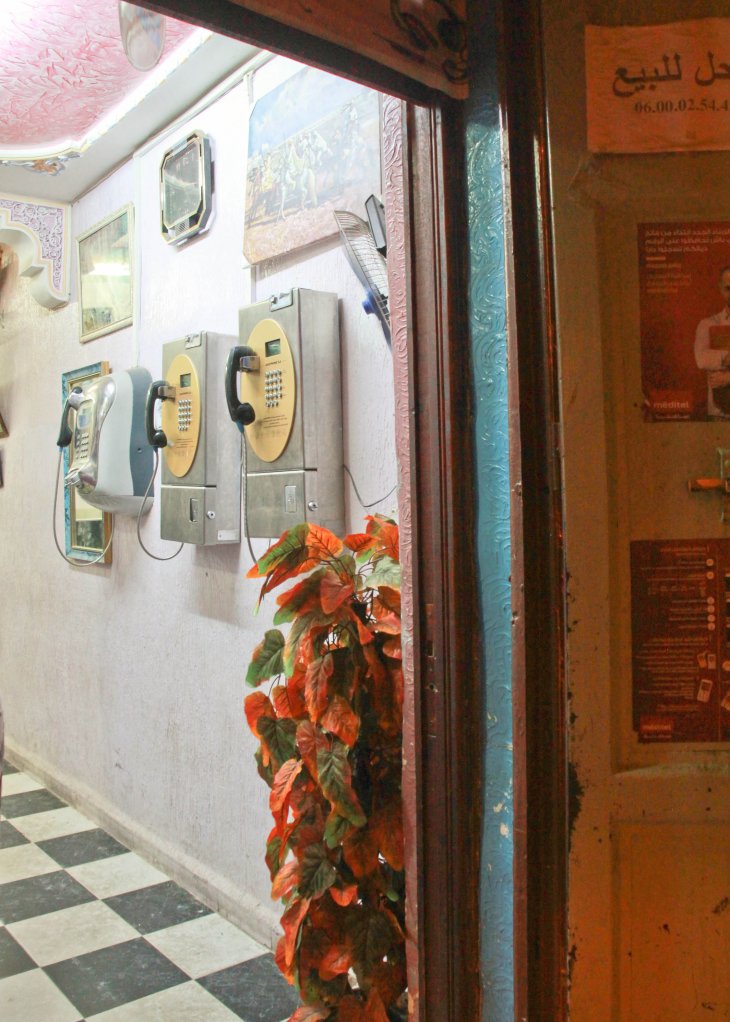Security has become an increasingly prominent part of everyday life, impacting us as we travel, interact in community spaces, or consider options for communication. While physical barriers, passports, and technologies such as X-ray machines and metal detectors are commonly accepted as integral parts of the evolving security sector, ambient sound is rarely imagined as salient to security practices today. In my Security Dialogue article, ‘Audializing the Migrant Body’, I make a case for thinking about sound- and the sensory body more broadly- in research on bordering, mobility, biometrics, migration, and security. I suggest that the aural body represents a site of geopolitics that deserves consideration on moral and ethical grounds.

Photo credit: Author
In tracing transnational sonic flows and their interaction with local, regional, and international actors, I conducted fieldwork in Morocco in 2015 and 2016, interviewing (in French and English) undocumented sub-Saharan African migrants who arrived in Morocco via the Western Mediterranean migration route. Migrants passed through the Malian cities of Bamako and Gao, or Arlit in Niger, coalescing and regrouping in Tamanrasset, Algeria, after the difficult Saharan traverse. From Tamanrasset, migrants continued north to Algiers or Oran, after which they tried their luck at entering Morocco via the heavily guarded border crossing at Maghnia. Depending on their country of origin and route, migrants I spoke with crossed as many as nine international borders in the course of their journey. Some of these border crossings presented few difficulties; others risked being fatal and left my interlocutors with physical and psychological scars. All the individuals in my data pool were trying to reach Europe via port cities along the Mediterranean—either by boat or by scaling the treacherous and highly guarded fences separating the Spanish enclaves of Ceuta and Melilla from Morocco.

Photo credit: Author
Many of my interviews took place in migrants’ temporary living quarters in Takadoum, a slum on the outskirts of Morocco’s capital city of Rabat. Initial contact was mediated through migrant-run aid organizations where I volunteered during my time in the field. I also interviewed migrants in unofficial forest encampments outside of Nador, along Morocco’s northern coast, and organized extended focus groups where migrants gathered, on a voluntary basis, to talk on the interrelated topics of their phones and communication practices, their journeys, strategies for scaling the border fence, and their onward plans. In the course of the conversations, I paid heed to the ways that migrants’ engagement with sound and communication infrastructures impacted their behavioral strategies, route choices, and understandings of positionality within a globalized security apparatus.
One of the occasionally frustrating aspects about academic fora is the way that personal human stories are often written out to make room for more generalizable findings or theoretical implications. While my article in Security Dialogue could not capture the pathos, suffering, hope, and occasional humor that migrants shared, it is my aim that its sustained attention to the phenomenological, embodied politics of sound reminds readers of the commonalities all humans share at the biological level, connecting macro-political questions on important topics such as immigration and human rights with micro-processes that make up the fabric of everyday lives.